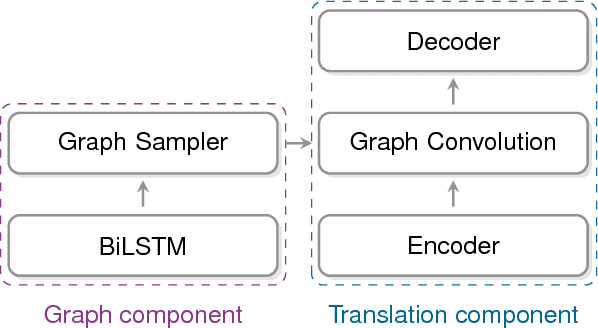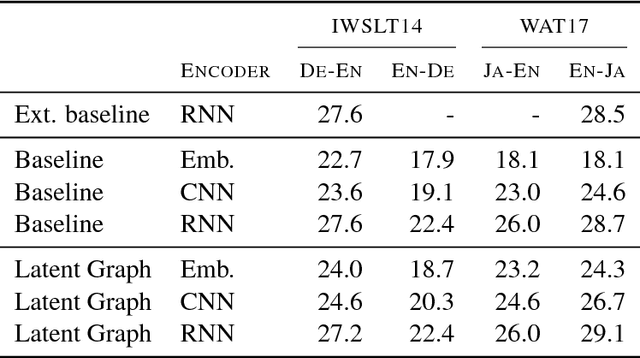Modeling Latent Sentence Structure in Neural Machine Translation
Paper and Code
Jan 18, 2019



Recently it was shown that linguistic structure predicted by a supervised parser can be beneficial for neural machine translation (NMT). In this work we investigate a more challenging setup: we incorporate sentence structure as a latent variable in a standard NMT encoder-decoder and induce it in such a way as to benefit the translation task. We consider German-English and Japanese-English translation benchmarks and observe that when using RNN encoders the model makes no or very limited use of the structure induction apparatus. In contrast, CNN and word-embedding-based encoders rely on latent graphs and force them to encode useful, potentially long-distance, dependencies.
* Accepted as an extended abstract to ACL NMT workshop 2018
 Add to Chrome
Add to Chrome Add to Firefox
Add to Firefox Add to Edge
Add to Edge